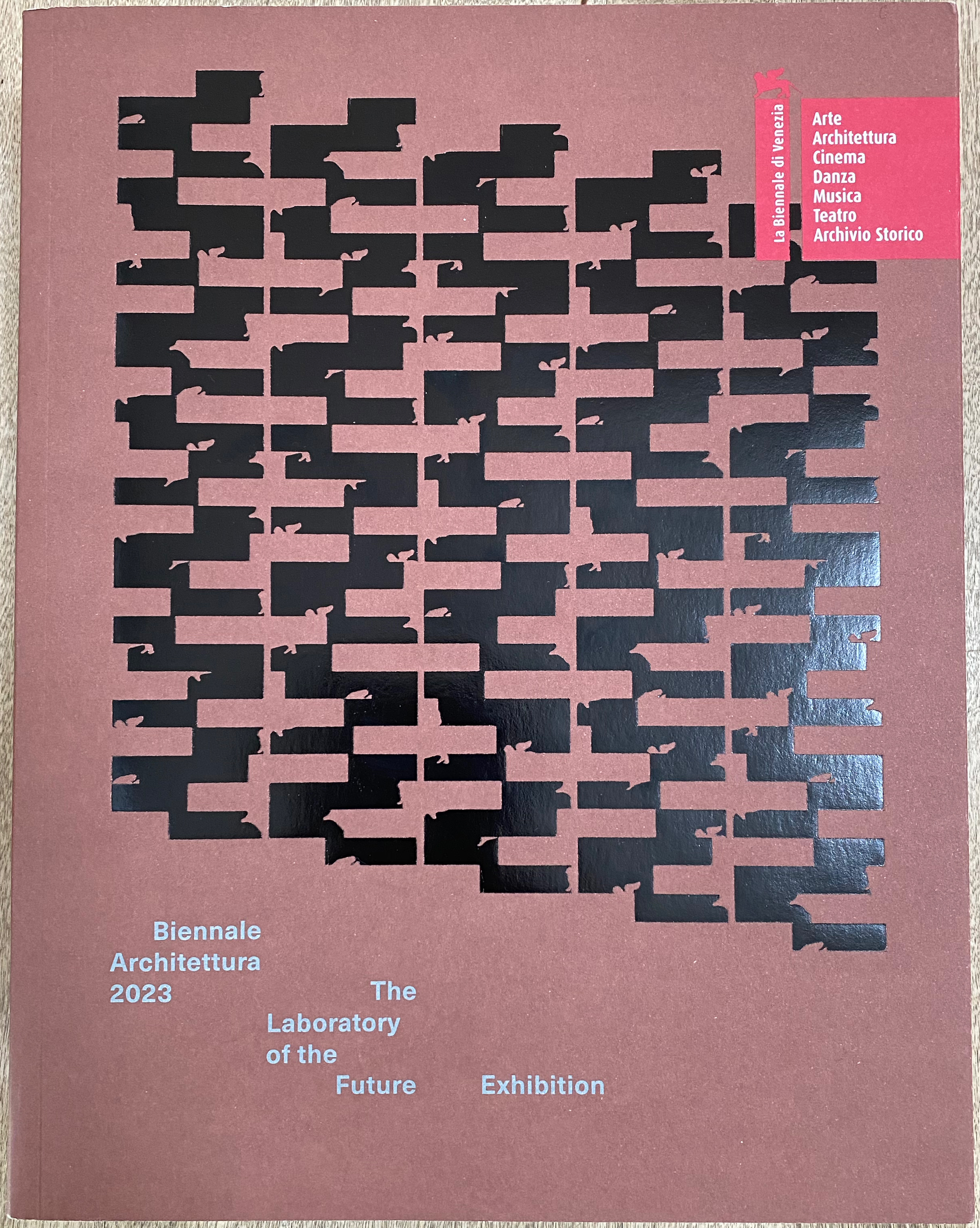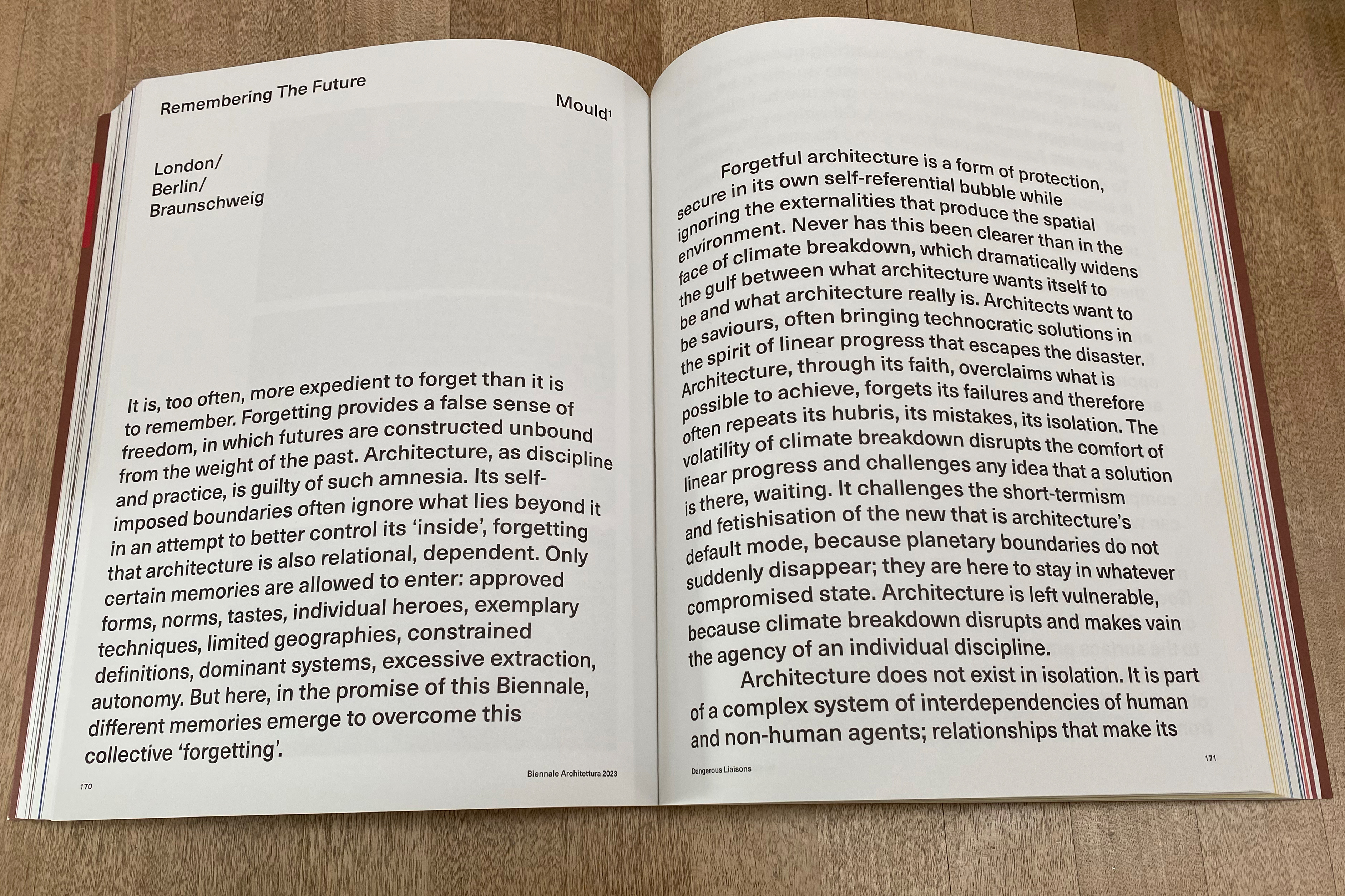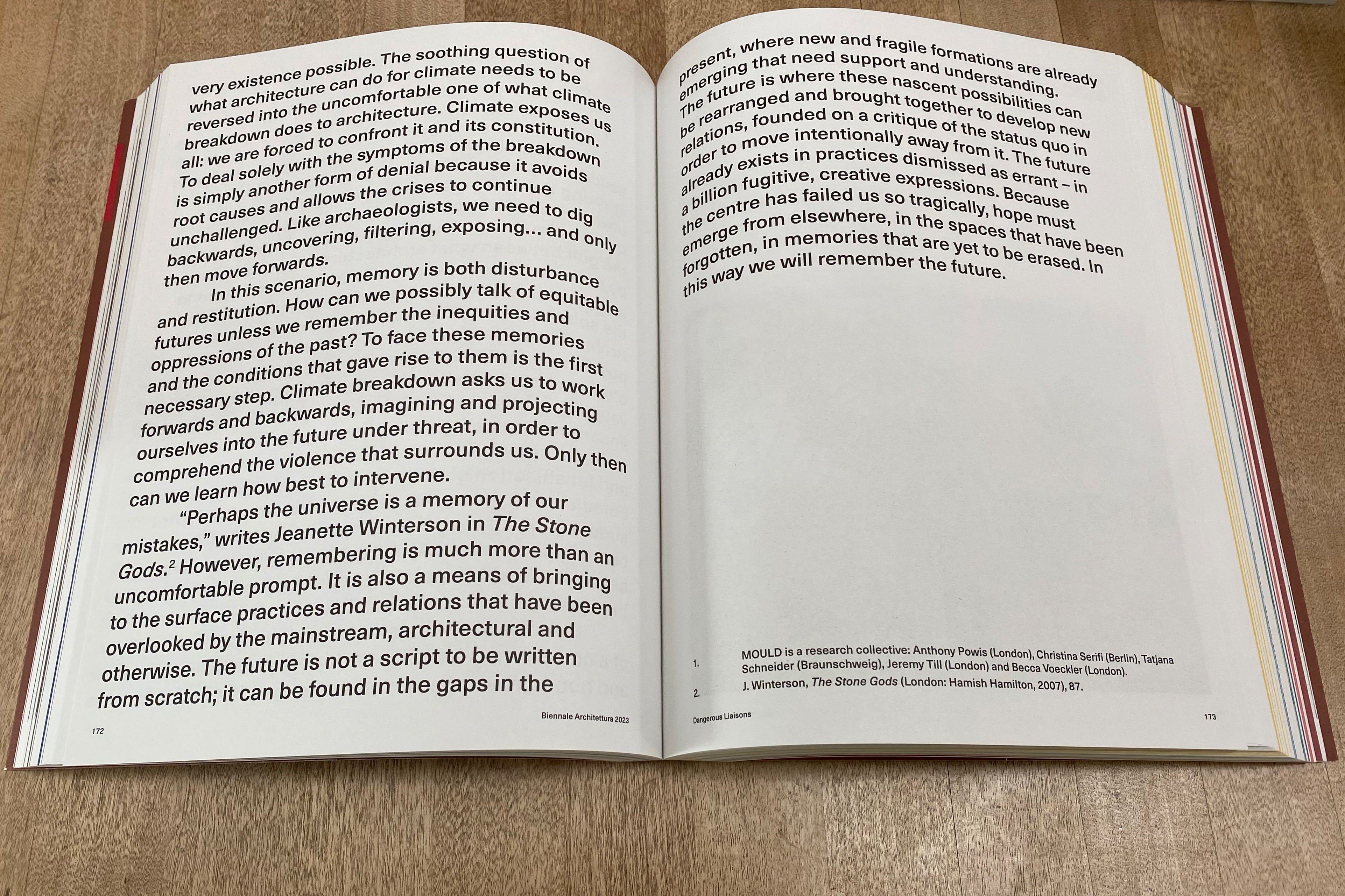Remembering the Future

It is, too often, more expedient to forget than it is to remember. Forgetting provides a false sense of freedom, in which futures are constructed unbound and practice, is guilty of such amnesia. Its self-imposed boundaries often ignore what lies beyond it in an attempt to better control its 'inside#, forgetting that architecture is also relational, dependent. Only certain memories are allowed to enter: approved forms, norms, tastes, individual heroes, exemplary techniques, limited geographies, constrained definitions, dominant systems, excessive extraction, autonomy. But here, in the promise of this Biennale, different memories emerge to overcome this collective 'forgetting'.
Forgetful aroitecture is a form of protection, secure in its own self-referential bubble while ignoring the externalities that produce the spatial environment. Never has it been clearer than in the face of climate breakdown, which dramatically widenns the gulf between what architecture wants itself to be and what architecture really is. architects want to be saviours, often bringing technocratic solutions in the spirit of linear progress that escapes the disaster. Architecture, through is faith, overclaims what is possible to achieve, forgets its failures and therefore often repeats its hubris, its misakes, its isolation. The volatility of climate breakdown disrupts the comfort of linear progress and challenges any idea that a solution is there, waiting. It challenges the short-termism and fetishisation of the new that is architecture's default mode, because planetary boundaries do not suddenly disappear; they are here to stay in whatever compromised state. Architecture is left vulnerable, because climate breakdown disrupts and makes vain the agency of an individual discipline.
Architecture does not exist in isolation. It is part of a complex system of interdependencies of human and non-human agents; relationships that make its very existence possible. The soothing question of what architecture can do for climate needs to be reversed into the uncomfortable one of what climate breakdown does to architecture. Climate exposes us all: we are forced to confront it and its constitution. To deal solely with the symptoms of the breakdown is simply another form of denial because it avoids root causes and allows the crises to continue unchallenged. Like archaeologists, we need to dig backwards, uncovering, filtering, exposing… and only then move forwards.
In this scenario, memory is both disturbance and restitution. How can we possibly talk of equitable futures unless we remember the inequities and oppressions of the past? To face these memories and the conditions that gave rise to them is the first necessary step. Climate breakdown asks us to work forwards and backwards, imagining and projecting ourselves into the future under threat, in order to comprehend the violence that surrounds us. Only then can we learn how best to intervene.
“Perhaps the universe is a memory of our mistakes,” writes Jeanette Winterson in The Stone Gods. However, remembering is much more than an uncomfortable prompt. It is also a means of bringing to the surface practices and relations that have been overlooked by the mainstream, architectural and otherwise. The future is not a script to be written from scratch; it can be found in the gaps in the present, where new and fragile formations are already emerging that need support and understanding. The future is where these nascent possibilities can be rearranged and brought together to develop new relations, founded on a critique of the status quo in order to move intentionally away from it. The future already exists in practices dismissed as errant – in a billion fugitive, creative expressions. Because the centre has failed us so tragically, hope must emerge from elsewhere, in the spaces that have been forgotten, in memories that are yet to be erased. In this way we will remember the future.

